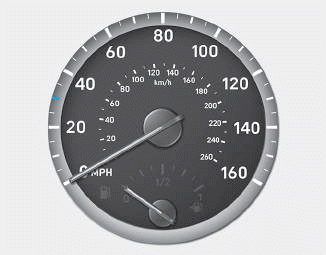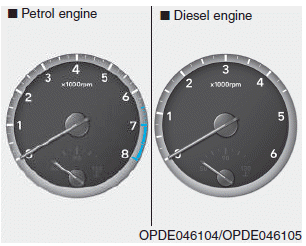Hyundai i-30: Maintenance / Emission control system
The emission control system of your vehicle is covered by a written limited warranty. Please see the warranty information contained in the Warranty Booklet in your vehicle.
Your vehicle is equipped with an emission control system to meet all applicable emission regulations. There are three emission control systems, as follows.
(1) Crankcase emission control system
(2) Evaporative emission control system
(3) Exhaust emission control system
In order to ensure the proper function of the emission control systems, it is recommended that you have your car inspected and maintained by a HYUNDAI authorised repairer in accordance with the maintenance schedule.
CAUTION
For the Inspection and Maintenance Test (with Electronic Stability Control (ESC) system)
- To prevent the vehicle from misfiring during dynamometer testing, turn the Electronic Stability Control (ESC) system off by pressing the ESC switch.
- After dynamometer testing is completed, turn the ESC system back on by pressing the ESC switch again.
Crankcase emission control system
The positive crankcase ventilation system is employed to prevent air pollution caused by blow-by gases being emitted from the crankcase. This system supplies fresh filtered air to the crankcase through the air intake hose. Inside the crankcase, the fresh air mixes with blow-by gases, which then pass through the PCV valve into the induction system.
Evaporative emission control system
The Evaporative Emission Control System is designed to prevent fuel vapours from escaping into the atmosphere.
Canister
Fuel vapours generated inside the fuel tank are absorbed and stored in the onboard canister. When the engine is running, the fuel vapours absorbed in the canister are drawn into the surge tank through the purge control solenoid valve.
Purge Control Solenoid Valve (PCSV)
The purge control solenoid valve is controlled by the Engine Control Module (ECM); when the engine coolant temperature is low during idling, the PCSV closes so that evaporated fuel is not taken into the engine. After the engine warms-up during ordinary driving, the PCSV opens to introduce evaporated fuel to the engine.
 Interior care
Interior care
Interior general precautions
Prevent chemicals such as perfume,
cosmetic oil, sun cream, hand cleaner
and air freshener from contacting the
interior parts because they may
cause damage or discoloration...
 Exhaust emission control
system
Exhaust emission control
system
The Exhaust Emission Control System
is a highly effective system which controls
exhaust emissions whilst maintaining
good vehicle performance.
Vehicle modifications
This vehicle should not be modified...
Other information:
Hyundai i30 (PD) 2018-2025 Service Manual: Tire
Repair procedures Tire Wear 1. Measure the tread depth of the tires. Tread depth [limit] : 1.6 mm (0.063 in) 2. If the remaining tread depth (A) is less than the limit, replace the tire...
Hyundai i30 (PD) 2018-2025 Owner's Manual: Seat belt restraint system
Lap/shoulder belt To fasten your seat belt: Pull it out of the retractor and insert the metal tab (1) into the buckle (2). There will be an audible "click" when the tab locks into the buckle. You should place the lap belt (1) portion across your hips and the shoulder belt (2) portion across your chest...
Categories
- Manuals Home
- 3rd Generation i30 Owners Manual
- 3rd Generation i30 Service Manual
- FCA sensor
- Light bulbs
- Auto door lock/unlock features
- New on site
- Most important about car
Gauges and meters
Speedometer

The speedometer indicates the speed of the vehicle and is calibrated in kilometers per hour (km/h) and/or miles per hour (MPH).
Tachometer

